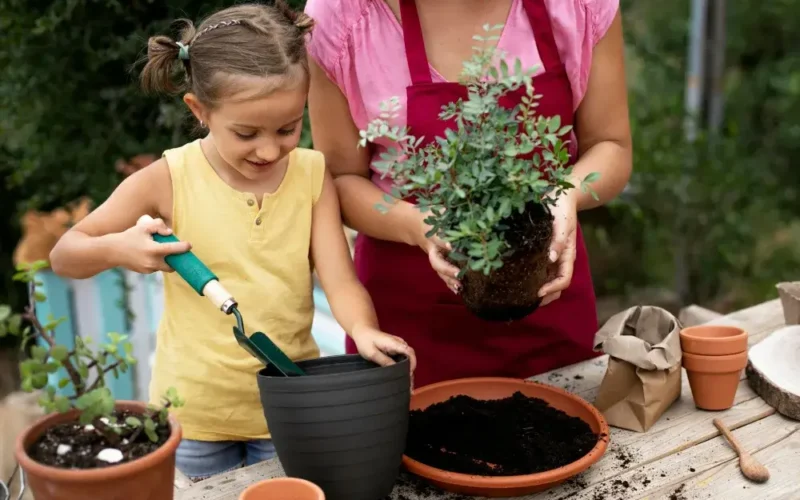🌱 The Complete Organic Gardening System
Why Organic Matters More Than Ever In an era of rising food costs and pesticide concerns, organic gardening has evolved from hobby to necessity. This word manual distills decades of agroecological wisdom into actionable steps, whether you’re cultivating a balcony herb garden or a half-acre homestead.
1. The Soil Food Web: Your Garden’s Secret Ecosystem
Healthy soil teems with billions of microorganisms per teaspoon. To nurture this invisible workforce:
-
Compost Tea Brewing: Steep compost in water for 48 hours to create a microbial-rich “energy drink” for plants
-
Biochar Integration: This porous charcoal increases water retention by 18% while sequestering carbon
-
Mycorrhizal Inoculants: Fungal networks extend root systems up to 100x (Great for tomatoes and fruit trees)
Pro Tip: Conduct a jar test – layer soil with water, shake, and observe separation layers to assess composition.
2. Precision Planting: Beyond the Basic Almanac
Modern organic growers combine lunar cycles with soil temperature data:
| Crop | Optimal Soil Temp | Lunar Phase |
|---|---|---|
| Carrots | 45°F (7°C) | Waning Moon (Roots) |
| Basil | 70°F (21°C) | Waxing Moon (Leaves) |
| Potatoes | 50°F (10°C) | New Moon (Tubers) |
Case Study: Intercropping brassicas with aromatic thyme reduces cabbage worm damage by 63%.
3. Water Wisdom: From Drought-Proofing to Dew Harvesting
-
Olla Irrigation: Bury unglazed clay pots that slowly release water (60% less usage)
-
Dew Collection: Install corrugated roofing panels at 30° angles to channel condensation
-
Bio-swales: Contour trenches filled with wood chips prevent runoff while feeding groundwater
4. Pest Control: The Pheromone Warfare Approach
Advanced organic strategies go beyond neem oil:
-
Trap Cropping: Plant sacrificial radishes to lure flea beetles from eggplants
-
Mating Disruption: Hang pheromone diffusers to confuse moth navigation
-
Predator Breeding: Build earwig hotels (upside-down pots with straw) to control aphids

5. The 4-Season Harvest Blueprint
Winter:
-
Cold frames extend kale production to -10°F (-23°C)
-
Hoop House Hack: Use cattle panel arches covered with 6mil plastic
Spring:
-
Succession plant radishes every 14 days for continuous harvest
-
Pre-sprout peas in wet paper towels for 2-day germination boost
6. Seed Sovereignty: Breeding Your Own Varieties
Select plants showing desirable traits (early fruiting, drought tolerance) and:
-
Isolate flowers with organza bags to control pollination
-
Ferment tomato seeds in their gel for 3 days to remove pathogens
-
Store in silica gel-desiccated mason jars (viability: 5-10 years)
7. Compost Engineering: Hot vs. Cold Methods
Hot Composting (140-160°F):
-
Ideal for killing weed seeds
-
Requires precise 30:1 carbon-to-nitrogen ratio
Vermicomposting:
-
Red wigglers process 1/2 lb food scraps daily per 1 lb worms
-
Castings contain 5x more nitrogen than traditional compost
8. Fruit Tree Alchemy: Grafting for Resilience
-
Whip Grafting: Join scion wood to rootstock while both are dormant
-
Bud Grafting: Insert a single bud under bark in late summer
-
Topworking: Convert mature trees to new varieties in 3 seasons
9. Regenerative No-Till Systems
Layer lasagna-style:
-
Cardboard (smothers weeds)
-
4″ green material (grass clippings)
-
8″ brown material (leaves)
-
2″ compost topping
Result: 22% higher microbial activity than tilled plots.
10. Urban Solutions: Microgardening Innovations
-
Tower Gardens: Grow 50 plants in 4 sq ft with aeroponics
-
WindowFarm Systems: Vertical hydroponics using recycled bottles
-
Gutter Gardens: Repurpose rain gutters for strawberry production
11. Preservation: Beyond Canning
-
Lacto-Fermentation: Sauerkraut in salt brine (preserves vitamins)
-
Root Cellaring: Store carrots in damp sand at 32-40°F (0-4°C)
-
Solar Dehydration: Build a 140°F (60°C) dryer from old windows
12. The Economic Case: ROI Calculations
Initial $300 investment yields:
-
$1,200+ in annual produce (4x return)
-
7.5 lbs weekly harvests (June-Oct)
-
90% reduction in grocery store pesticide exposure
Ready to transform your relationship with food? Explore SeedGreen’s Organic Starter Kits featuring heirloom seeds, soil testers, and custom planting calendars.

